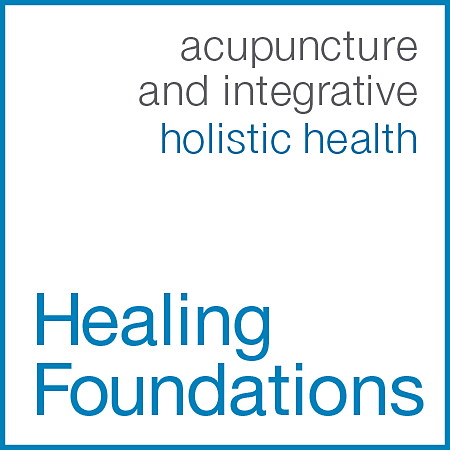We understand where you're coming from, totally.
1: You never see it on television
When's the last time you saw an advertisement for acupuncture needles on the evening news? In 2012, the pharmaceutical industry spent more than $27 billion promoting drugs, including $24 billion on marketing to doctors and over $3 billion on advertising directly to prospective patients (3). The advertisements remind us of how much pain we're in and a quick fix for it, and are rife with an almost comically long list of serious side effects, "including death." Fact is, they're not required to tell or show you everything; like what percentage of the cost of that drug you'll be paying for is spent on advertising it to you, if there is a similar drug or therapy with fewer or different risks that can also treat the condition, or even how the drug works (4). The first synthetic drug was discovered in 1869. Acupuncture and other modalities rooted in Traditional Chinese Medicine (TCM) have been around for many centuries. Just because you don't see it advertised, doesn't mean there's nothing to it.
2: No one you know ever said it was good for you
Your parents never used Traditional Chinese Medicine when you were growing up. I mean, who does that, right? Well, about 3.1 million adults in the United States did in 2006, according to a study from the U.S. National Institutes of Health (NIH)(1). That number isminuscule compared to the 258 million Americans that had contact with a Western healthcare professional in 2012. The most common reason for those millions of doctor visits? A cough (2). Another study by the NIH in 2002 (more than a decade ago, and years before Healing Foundations existed) found that more than 1.2 million American women sought out acupuncture for conditions not commonly well-treated by conventional medicine, such as chronic pain, and the majority reported using acupuncture in conjunction with conventional medicine. Knowing your options based on education and needs, instead of tradition, can be a healthful thing.
The expanding and positive impact
that complementary therapies are having
on Western medicine is real.
3: Energy, herbs, and needles sounds too crazy to be real medicine
Behind the glossy and established pharmaceutical industry that supports Western medicine lies the facts. Most drugs are developed from plants (just like Chinese herbal medicine), while others come from animals, minerals, and some are derived from chemicals synthesized in laboratories. Insulin, which is used to treat diabetes, was originally obtained from the pancreas of pigs and cows (go ahead, picture that). To keep up with demand, insulin is now mostly produced in labs by introducing human insulin gene into E. Coli bacteria, then cultured in huge vats of nutrients before being extracted back out(5). Now, that's some crazy stuff.
4: Traditional Chinese Medicine can't cure serious illness
We at Healing Foundations would never ever suggest replacing or substituting your family physician or emergency care with one of our therapies. That's a fact. Broken leg? Heart attack? Get to the hospital immediately. Once the emergency is over, we can help make the recovery easier and faster because what we offer isn't alternative, it's integrative. In the six years since opening the doors at Healing Foundations, we've provided acupuncture to over a thousand people and have had many successes in treating depression, anxiety, and stress, injury rehabilitation, fertility and antenatal needs, surgical recovery and the effects of brain injury and cancer therapies.
5: There's not enough scientific proof
That's a true statement. An internet search provides no shortage of entries repeating a handful of studies that question the efficacy of acupuncture, but that proves only that not enough has been done to figure out why acupuncture has been so helpful and effective for so many people. The FDA forces Western medicine to endure years-long studies and proof of it's new drugs and procedures before they're allowed to be sold and used on you, yet year after year, there are recalls because the science behind them was wrong (6, 7). Until acupuncture studies are properly designed and executed there will continue to be lack of irrefutable proof of it's efficacy.
In reality, acupuncture and complementary therapies are gaining a real foothold; not just for a few people here and there, but changing and creating a broader view of what healthcare really is. The U.S. federal government’s Center for Substance Abuse Treatment and the U.S. Department of Defense/Veteran’s Affairs have each published best practice guidelines that address the value of acupuncture for chemical dependency (8). The US military is using and studying the positive impact of acupuncture on those suffering with PTSD (9). And in 2014, the branch of the National Institutes for Health that deals with acupuncture and other holistic treatments found it necessary to remove 'Alternative Medicine' from its name, and replace it with 'Integrative Health' instead (10).
The expanding and positive impact that complementary therapies are having on Western medicine is real. If you haven't already changed your mind about the therapies Healing Foundations offers, what reasons do you have left?
References:
(1) https://goo.gl/mLgL5X / (2) http://goo.gl/L412Wt / (3) http://goo.gl/94AkYT / (4) http://goo.gl/a4f9GU
5) http://goo.gl/n87Pzl / (6) https://goo.gl/r7H9VW / (7) http://goo.gl/XCvXPN / (8) https://goo.gl/KNyTxJ
(9) http://goo.gl/hnVGHS / (10) http://goo.gl/qB1ncm














